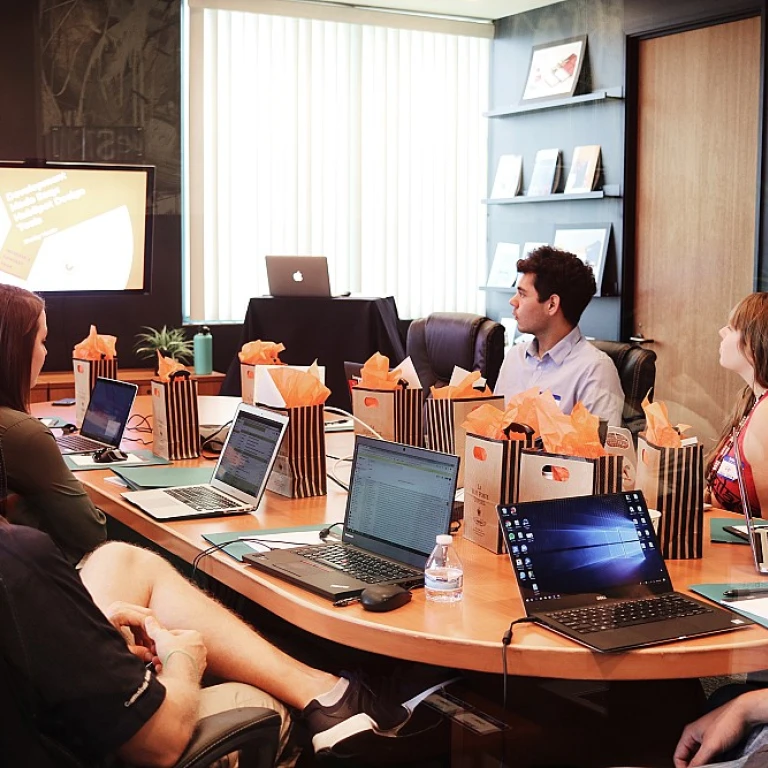The Evolving Role of the CHRO
Transformation: From Administrator to Strategist
The role of the Chief Human Resources Officer (CHRO) has undergone a significant transformation in recent years. Traditionally, CHROs were seen primarily as administrative heads focused on tasks like payroll, benefits, and compliance. However, the modern business environment demands much more from these leaders, positioning them as strategic partners in the C-suite. This evolution requires CHROs to possess a deep understanding of both human capital and business strategy.
In today's rapidly changing corporate landscape, CHROs are expected to drive organizational success by aligning human resource initiatives with the overall company goals. This strategic alignment ensures that talent acquisition, employee development, and workplace culture all contribute to achieving the long-term vision of the organization.
Moreover, CHROs now play a crucial role in understanding the role of human resources in facilitating organizational agility and responding effectively to market demands. They need to anticipate future workforce requirements and adapt quickly to changes, ensuring the organization remains competitive and innovative.
The expanding responsibilities of CHROs also encompass strategic decision-making processes. By collaborating with other executive leaders, they help shape policies and strategies that drive business results and foster a robust organizational culture. This collaboration requires CHROs to leverage their insights on workforce dynamics and talent trends, ensuring that human resources initiatives are at the forefront of company strategy.
As we delve further into understanding their role, it's clear that CHROs are not only navigators in a sea of workforce challenges but also visionaries who craft pathways for future growth. This pivotal shift underscores the necessity for CHROs to be at the heart of corporate strategy, redefining what it means to lead in the realm of human resources.
Strategic Decision Making in Human Resources
Strategic Thinking in Modern HR Management
In the rapidly changing landscape of human resources, the role of a Chief Human Resources Officer (CHRO) has transformed into a strategic partner within the organization. This evolution is not just about adapting to new tools and technologies; it’s about reshaping the way HR contributes to the overall business strategy.
A strategic CHRO must engage in decision-making processes that extend beyond the traditional HR domains of staffing and compliance. They need to harness their deep understanding of organizational dynamics to influence strategic outcomes effectively. It's about aligning HR strategies with business goals in a way that enhances the company's competitive edge.
For instance, at the executive level, negotiating the balance between growth initiatives and workforce sustainability is a crucial skill. The CHRO contributes insights into how talent acquisition and retention strategies can support business expansion or diversification plans. This level of involvement places the CHRO at the heart of strategic discussions, ensuring that human capital is always considered in major business decisions.
The ability to foresee potential challenges and opportunities within the workforce landscape is another critical aspect of strategic HR leadership. By anticipating shifts, such as changes in employee expectations or emerging skill requirements, CHROs can guide their organizations to proactive rather than reactive responses. This foresight leads to the development of initiatives that not only mitigate risks but also capitalize on new trends.
Moreover, the strategic CHRO is instrumental in fostering an agile and flexible working environment. They need to build frameworks that support innovation and adaptability, encouraging an organizational culture that sees change as an opportunity rather than a hurdle. By doing so, CHROs help their companies stay resilient and competitive in an ever-evolving market.
These strategic capabilities set the foundation for effective talent management and development efforts, which are essential for nurturing the leaders of tomorrow. As we delve into this aspect, we understand how these strategic insights influence talent strategies that drive performance and growth.
Talent Management and Development
Boosting Organizational Growth Through Effective Talent Management
In today's rapidly changing business landscape, the role of a Chief Human Resources Officer (CHRO) extends far beyond traditional personnel management. One of the critical aspects is optimizing talent management and development to align with the organization's strategic goals.
A strategic CHRO embraces a comprehensive approach to talent management that emphasizes attracting, developing, and retaining top talent. This approach not only fuels organizational growth but also cultivates a culture of continuous improvement and innovation. For CHROs, it's crucial to identify skills gaps within the workforce and create tailored development programs that address these gaps while aligning with the company's future objectives.
Moreover, nurturing a diverse and inclusive talent pool is an indispensable part of this strategy. By fostering diversity, CHROs can ensure that the organization benefits from a wide range of perspectives and ideas, which is essential for driving creativity and adapting to changes in the market. The implementation of strategic talent management also requires a deep understanding of organizational needs and long-term planning to stay competitive.
Investing in professional development and learning opportunities is another fundamental aspect. A strategic CHRO must focus on creating pathways for career advancement and skill enhancement, ensuring that employees feel valued and motivated to grow within the organization. This effort not only aids in talent retention but also builds a robust leadership pipeline for the future.
To learn more about how being a strategic CHRO goes beyond merely managing human resources, you'll find additional insights
here. As we move further along, leveraging data-driven insights can significantly enhance the efficiency of talent management strategies by allowing for informed decision-making and personalized employee experiences.
Enhancing Employee Engagement and Experience
Fostering a Positive Workplace Culture
In the transformative journey of human resources, enhancing employee engagement and experience has become a cornerstone task for strategic CHROs. As organizations increasingly recognize the fundamental role that employee engagement plays in driving business outcomes, the responsibility of crafting an environment where employees feel valued and motivated falls heavily on the shoulders of the CHRO.
Creating a thriving workplace culture is no longer just about offering competitive salaries or benefits. It extends to an ecosystem where employees find meaning and purpose in their work. This requires a comprehensive understanding of the current work trends, employees' expectations, and organizational dynamics.
Central to enhancing employee experience is effective communication. CHROs must ensure open lines of communication across all levels of the organization. By fostering transparent dialogues, employees feel more connected to the organizational vision and are better equipped to align their personal goals with those of the company. This alignment often translates into increased job satisfaction and productivity.
Employee engagement also thrives on recognition. Strategic CHROs leverage recognition platforms and programs to highlight and celebrate employee achievements. Regular recognition not only boosts morale but also reinforces the desired organizational behaviors and values.
Moreover, the physical and psychological environment in which employees work plays a crucial role in their engagement levels. This includes everything from the office design to the resources available for mental health support. CHROs are tasked with ensuring that these needs are met, leading to a more holistic approach to employee well-being.
However, the challenge lies not only in enhancing current employee experience but also in predicting and adapting to future workforce needs. As part of strategic decision-making in human resources, CHROs must continually assess and refine their strategies to keep pace with the evolving expectations of a diverse workforce.
In conclusion, for strategic CHROs, employee engagement and experience are about belonging and empowerment. By focusing on these elements, they can significantly impact both the happiness of their employees and the success of their organization.
Leadership and Workforce Management
Fostering Strong Leadership within the Organization
In the intricate architecture of a modern organization, the CHRO plays an indispensable role as a linchpin in fostering leadership excellence. This aspect of the role goes beyond just managing human capital; it necessitates harnessing a strategic mindset to cultivate leaders who can steer the organization towards its goals.
The strategic CHRO is tasked with understanding the broader business goals and translating them into actionable leadership strategies. This involves identifying the competencies required for leadership roles and implementing programs that build these skills among potential leaders. By using insights gleaned from data-driven approaches, as outlined previously, CHROs can make informed decisions on leadership development and succession planning.
Furthermore, the CHRO works closely with top executives to ensure there is alignment between leadership styles and the organizational culture. It is crucial to create an environment conducive to open communication and collaboration, fostering a sense of ownership among leaders at every level. This can lead to improved decision-making and a unified direction across the company.
In addition, empowering employees through leadership initiatives enhances their engagement and sense of belonging, which ultimately contributes to a robust and resilient workforce. By placing emphasis on leadership development, the CHRO not only nurtures potential within the business but also safeguards its future by building adaptable leaders ready to tackle emerging challenges.
This proactive approach to leadership management is part of the larger strategy of enhancing employee engagement and experience, establishing a workplace where talent is not only managed but thrives. By prioritizing leadership within workforce management, CHROs solidify the foundation upon which successful and strategic human resources efforts are built.
Leveraging Data-Driven Insights
Harnessing the Power of Data in HR
In today's competitive business landscape, the role of a strategic Chief Human Resources Officer (CHRO) extends beyond traditional HR duties. It's no longer sufficient to manage workforce logistics or compliance; instead, the modern CHRO is tasked with leveraging data-driven insights to inform strategic decision-making and shape organizational success.
Data analytics in human resources can uncover significant patterns and trends that influence various HR functions. By analyzing employee performance metrics, turnover rates, and recruitment effectiveness, CHROs can make informed decisions on talent management and development. These insights allow for the creation of targeted training programs and the implementation of effective retention strategies.
Furthermore, data facilitates the enhancement of employee engagement and experience. By collecting feedback through surveys and performance scores, CHROs can identify areas for improvement and implement initiatives that foster a supportive and motivating work environment, directly contributing to the company's culture and employee satisfaction.
The strategic CHRO also plays a pivotal role in using data to lead and manage workforce dynamics effectively, aligning leadership objectives with employees' needs and organizational goals. This synergy between leadership and the workforce is crucial in maintaining a competitive edge and achieving long-term success.
Embracing data-driven approaches not only empowers CHROs to make sound strategic decisions but also fosters a culture of continuous improvement and adaptability, essential qualities in the ever-evolving world of HR management.







